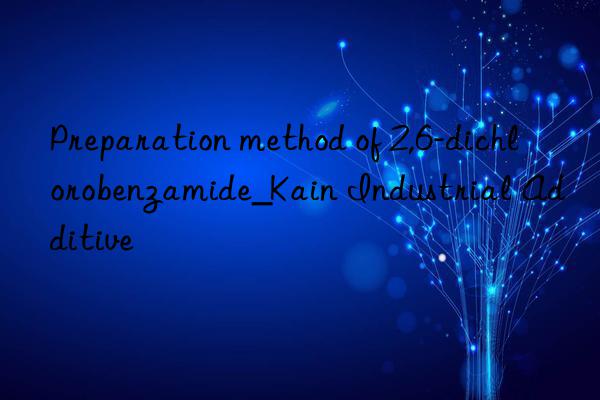
Background and overview[1]
Halogenated benzamide compounds include 2,6-dichlorobenzamide, which is a key intermediate in the synthesis of benzoylurea pesticides, which are chitin synthesis inhibitors. , killing insects by inhibiting the biosynthesis of chitin in the insect body. Its mechanism of action is different from other insecticides. It has high insecticidal activity, broad insecticidal spectrum, low residue, strong selectivity, and safety for humans and animals. Characteristics: It is an environmentally friendly insecticide variety. Benzoylurea insecticides are currently the main variety of insect growth regulator pesticides. The demand at home and abroad is relatively large. Therefore, the development of key intermediates has attracted much attention in the pesticide industry. The preparation methods of halogenated benzamide compounds include 2,6-dichlorobenzamide mainly include sulfuric acid hydrolysis method, metal catalysis method, alkaline hydrolysis method, etc.
The traditional method of hydrolyzing benzonitrile into amides is to use excess concentrated sulfuric acid for hydrolysis. This method has a higher yield, but produces a large amount of wastewater, which is not environmentally friendly. The metal catalytic method uses ruthenium, gold, silver, copper and other metals and metal ligands as catalysts, and hydrolyzes them in air or oxygen to obtain amides. The disadvantage of this method is that precious metals or ligands tend to be more effective, and the recovery of precious metals is also difficult. It is more difficult. Not only is the cost high, but heavy metal residues in the product are also issues that must be considered and solved. Alkaline hydrolysis often requires high-temperature and high-pressure conditions, and there are many by-products during the reaction, such as deacidification or the generation of carboxylic acid, and dehalogenation reactions will also occur, making the yield low and unsuitable for industrial production.
Preparation[1]
Preparation including 2,6-dichlorobenzamide is as follows: In a 500ml reaction bottle, add 51.6g (0.3mol) of 2,6-dichlorobenzonitrile, 41.6g of water, and 30% sodium hydroxide solution 0.6g, raise the temperature to 35°C, add 55.65g (0.45mol) of 27.5% hydrogen peroxide dropwise, and complete the dropwise addition in 5 hours. After the dropwise addition is complete, take a sample for central control, and 2,6-dichlorobenzonitrile ≤ 0.5% is qualified. Filter, rinse the filter cake with 83.2g of water, and dry the wet product to obtain 55g of the finished product 2,6-dichlorobenzamide, with a purity of >99.0% and a yield of 97%.
Main reference materials
[1]CN201710184084.2 Preparation method of halogenated benzamide compound

 微信扫一扫打赏
微信扫一扫打赏

